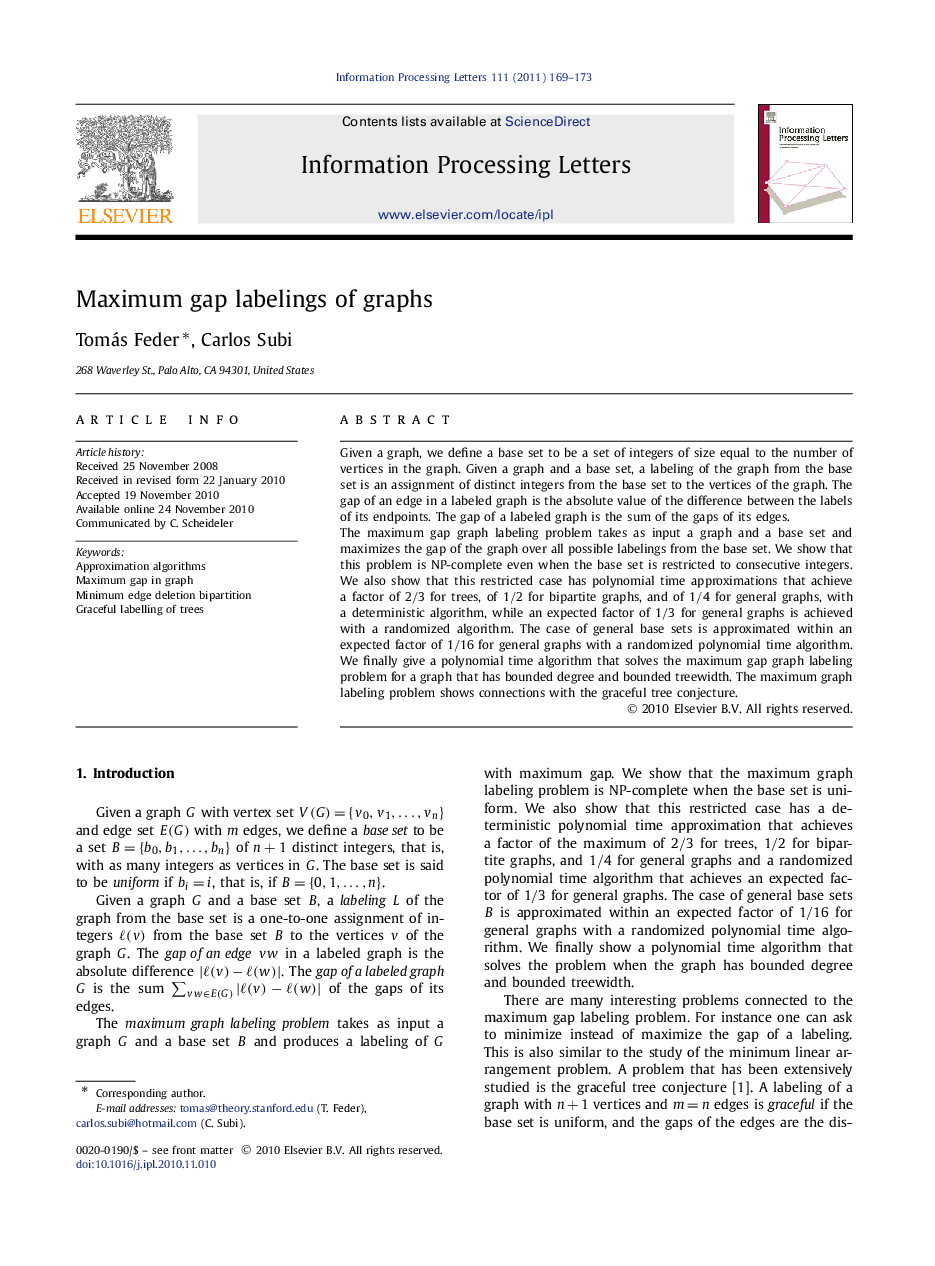| Article ID | Journal | Published Year | Pages | File Type |
|---|---|---|---|---|
| 427366 | Information Processing Letters | 2011 | 5 Pages |
Given a graph, we define a base set to be a set of integers of size equal to the number of vertices in the graph. Given a graph and a base set, a labeling of the graph from the base set is an assignment of distinct integers from the base set to the vertices of the graph. The gap of an edge in a labeled graph is the absolute value of the difference between the labels of its endpoints. The gap of a labeled graph is the sum of the gaps of its edges.The maximum gap graph labeling problem takes as input a graph and a base set and maximizes the gap of the graph over all possible labelings from the base set. We show that this problem is NP-complete even when the base set is restricted to consecutive integers. We also show that this restricted case has polynomial time approximations that achieve a factor of 2/3 for trees, of 1/2 for bipartite graphs, and of 1/4 for general graphs, with a deterministic algorithm, while an expected factor of 1/3 for general graphs is achieved with a randomized algorithm. The case of general base sets is approximated within an expected factor of 1/16 for general graphs with a randomized polynomial time algorithm. We finally give a polynomial time algorithm that solves the maximum gap graph labeling problem for a graph that has bounded degree and bounded treewidth. The maximum graph labeling problem shows connections with the graceful tree conjecture.
Research highlights► We assign labels to vertices to maximize edge difference sum. ► The label set is fixed ahead of time. ► We give polynomial time exact and approximation algorithms. ► We give NP-completeness proofs.
